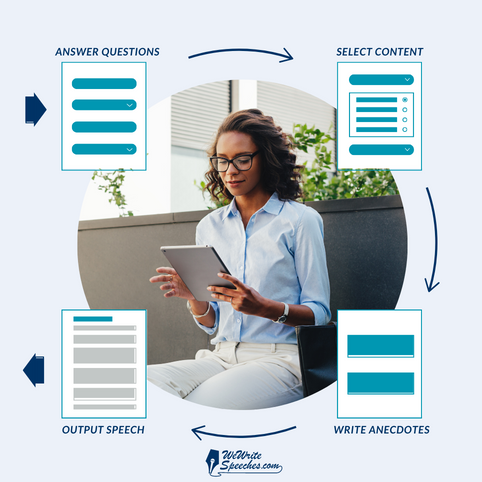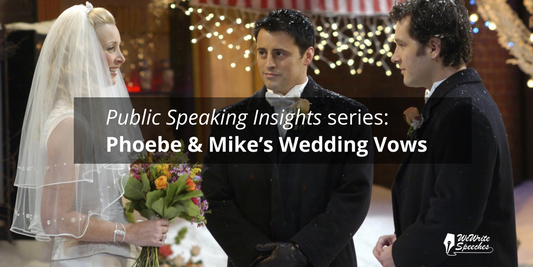
Generative AI
Our system is a lot more than a clever way of using Generative AI technology. We do use one of the latest Large Language Models (LLMs) where it solves some problems for us, but that is just a small part of what our system does. It is specialised speechwriting software designed with the complexities of wedding-speeches in mind. See below for more details.
You can build a speech yourself using ChatGPT/Gemini but...
ChatGPT and Gemini and Claude 3 (and the others) are brilliant tools but they don't know which content should be included in your particular wedding speech, for your particular wedding, given all the complexities involved. You need to tell them. Knowing what to say is more complicated than you might think.
Our AI-enabled speechwriting tool has these rules built in, so you don't have to worry about what to say or how to say it. And you can still select or write your own content where it matters.
How our AI speechwriting tool works
Conceptual
The system takes the user through two main phases to get to the speech itself.
- First the user goes through a data collection exercise - essentially answering a specialized questionnaire where they get to provide content (does the groom already have children?..), select content (e.g. bible verses, witticisms), write anecdotes as well as make decisions. That process kicks off after the user clicks the 'Start' button from the 'My Projects' screen. The questionnaire is very dynamic and won't ask for information that it doesn't need. The left side of the diagram below is an attempt to depict how each user might take a different path through the questionnaire.
- Then when the user clicks on the button to generate the speech, the system uses our proprietary algorithms to decide how to structure the speech. It will not just choose WHETHER to include a piece of content, but it will often choose between multiple versions of a piece of content. These variants may or may not contain Generative AI prompts. For example, if the groom does have children, the system will call different rule sets (containing different AI prompts, or none at all) depending on additional important factors (are the children also the bride's children?). Having generated a pre-draft speech, the system will then use Generative AI one more time to polish the speech, improving transitions etc. For our ESSENTIAL and ESSENTIAL PLUS speeches, we allow the user to generate three versions of each speech, ensuring they have a lot to work with, when they do their own edits.
This structure makes the system extremely powerful and capable of handling very demanding speeches with a lot of nuance. It took us over a year just to build out the rules and configurations.
The following diagram is very simplistic, but hopefully gets the essential idea across:

Screenshots
Assign speech projects
When someone buys a speech package, all the speeches are delivered to their account. They can then assign them to each of their chosen speakers.

Build a profile
The tool has a specialized questionnaire that we have configured to request information we need to build out the draft speech.

Offers curated content
At certain points in the process, the user can select from lists of relevant content, whether sentimental or funny lines, or content like quotations, proverbs or Bible verses.

Prompt the user to write their own content
There is some content that should be written by the person who is going to speak it. The system prompts the user to write this content at certain points (personal anecdotes, sentimental memories or delicate topics).
It gives guidance on how to write what is needed (just as ChatGPT only gives good results if you give it a good prompt, a person also benefits from some guidance!).

Structure a speech
The system will generate an appropriate speech structure, based on a set of pre-configured rules and the details it has been provided by the user.

Generate a draft speech
The tool will then populate the structure it has created with well-written content, blending:
- curated content that the user has selected;
- personal content that the user has written;
- some of our content; and
- some Generative AI content, based on prompts that have been dynamically built with selected data that has been provided by the user.
After the initial version has been generated, the user can generate up to two more versions, giving them lots of options when it comes to editing the speech later.






